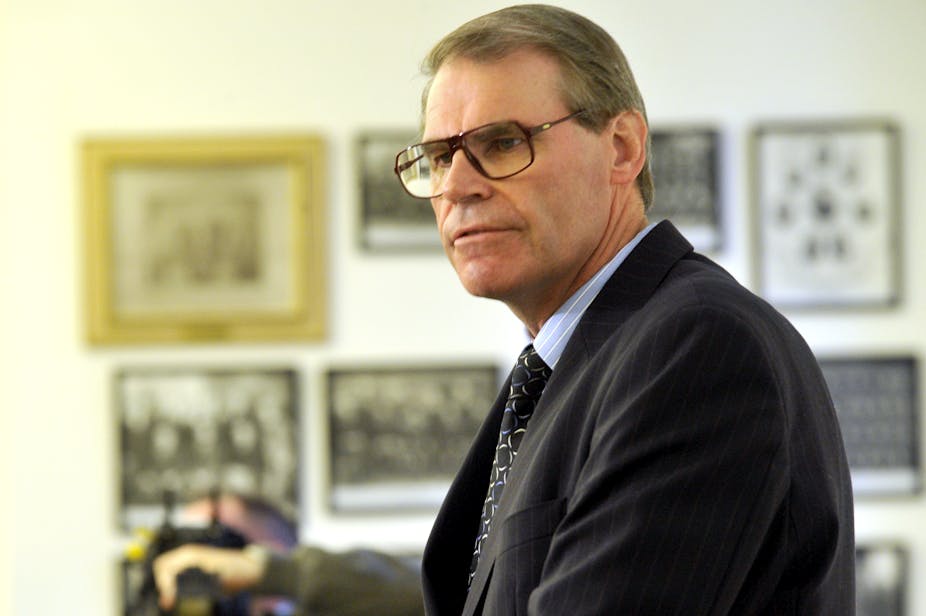In the wake of the ALP’s poor result in the recent Western Australia Senate election, The Conversation is publishing a series of articles looking at the party’s brand, organisation and future prospects.
The dust had barely settled from Labor’s poor performance in the Western Australian Senate re-election when calls for internal party reform from the likes of party elder John Faulkner and national president Jenny McAllister began.
In practice, political parties are hierarchical organisations whose primary function is to select people from within their midst to be candidates at elections. If elected, these representatives will carry their party’s interests in the legislature. For Australia’s two major parties – Labor and Liberal – winning executive power is the benchmark of success.
Failing to win government, however, represents something of a corporate failure on the part of the party. Naturally enough, failure also results in party reviews. Both major parties participate in what is now becoming a post-election ritual for the losing side.
According to reviewers from both sides of politics, bringing in more ordinary citizens as party members is crucial to rejuvenating the party in the wake of a loss. But as enticing as the idea of a party bursting at the seams with members is to notions of party democracy, the reality is the empowerment of party members does have its dangers.
This is especially the case if the views and outlooks of these members are at odds with the electorate.
What reviews find
The conclusions major parties reach in post-election reviews have some interesting areas of commonality. They tend to see electoral failure as organisational failure - a conclusion that can conveniently absolve the parliamentary leadership of some of the responsibility.
Reviews by party elders John Valder (who reviewed the Liberal Party after its 1983 election loss), John Faulkner, Bob Carr and Steve Bracks (Labor, 2010) and Peter Reith (Liberal, 2010) commonly concluded that one of the reasons their parties didn’t perform as well as they would have liked was poor candidate selection.
Another commonly held view is that increased membership can only happen if ordinary people have a reason to join. Party oracles all seem to conclude that giving the ordinary citizen more power to select candidates should act as an important incentive for becoming a party member.
For the Victorian branch of the Liberal Party, the very American party notion of having caucuses and conventions has become a model for the pre-selection process. The Labor Party also likes American ideas and has played around with primaries. Both parties project these ideas as proof of their commitment to participatory democracy.
This is a powerful political argument used by the reformers to outflank their internal party critics. After all, who would want to be cast as an opponent of democracy?
Swinging voters and ideologues
There is potential for a significant disconnect to occur between party members an especially those voters who make up the “swinging” electorate.
Leaving aside those who join political parties because they aspire to a parliamentary career – or those who have been recruited by someone who aspires to a parliamentary career – the remainder may well be those who see politics as a clash of ideas and ideologies. They have very firm views on what changes to society their parties should make when they win executive power.
This may be quite different from the outlook of the 30% of Australian voters who reside in swinging marginal seats. Their choice is the one that actually decides which of the major parties governs the country.
Swinging voters are pragmatic in that they see politics not as a battle of philosophies or ideology, but as a question of which party is most likely to deliver services without raising taxes, and which is unified enough to at least give the semblance of order and stability. To win government, the major parties have to appeal to this very centrist and pragmatic constituency.
The Victorian Liberals’ example
An insight into the potential that enfranchising an ideological mass membership has to disrupt the pragmatic aspirations of those who lead the party’s parliamentary wing arose in Victoria earlier this year. Liberal state government minister Mary Wooldridge sought pre-selection for the seat of Kew after her current seat had been abolished in a redistribution.
With premier Denis Napthine backing her candidacy, Wooldridge faced the Liberal members of Kew. However, the rank-and-file preferred the social conservative views of an alternative candidate, Tim Smith.
The result has damaged the Liberal Party. This is partly because of the impact this decision had on Napthine’s standing and partly because the pre-selection battle has precipitated a debate about abortion law. It’s a debate the Liberal government simply does not want in an election year.

Labor, on the other hand, has structural barriers through the existence of its factions to mitigate the ability of branch members to dominate pre-selections. This is precisely what party reformers propose to give up in a bid to be seen to be embracing “party democracy”.
What’s more, some Labor reformers – including federal leader Bill Shorten – have floated the idea of distancing the party from the trade union movement. This is a proposal that would have serious implications for Labor’s financial well-being. Labor received around A$700,000 in direct donations from trade unions in the 2012-13 financial year.
Reform just window dressing?
Advocating internal party reform in the aftermath of an electoral failure has now become part of the election ritual.
At the moment, it is Labor that is failing and so it is Labor that is currently romanticising the idea of the noble branch member as the antidote to factional cronyism and poor policy formulation. If only politics were that simple.

